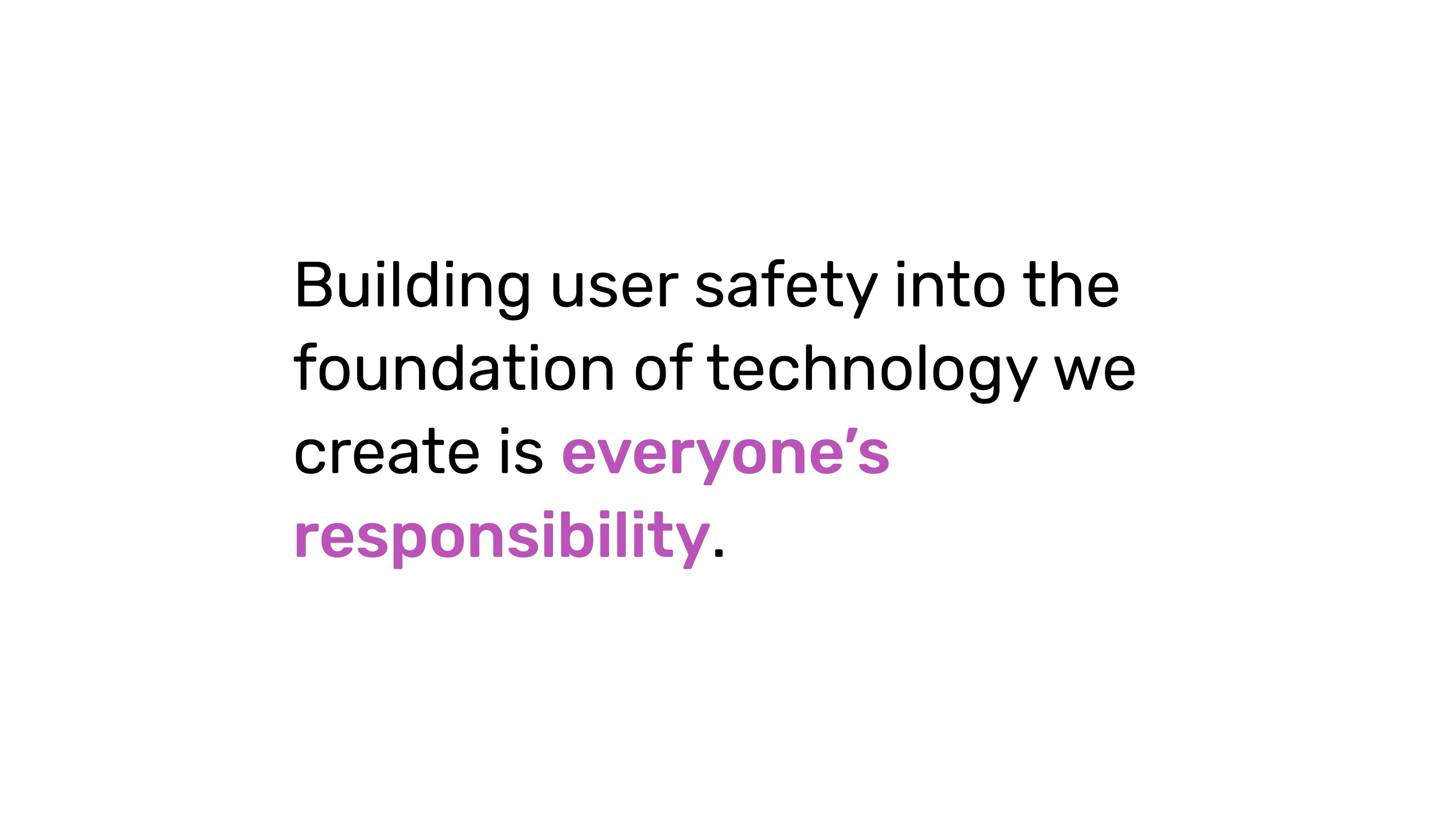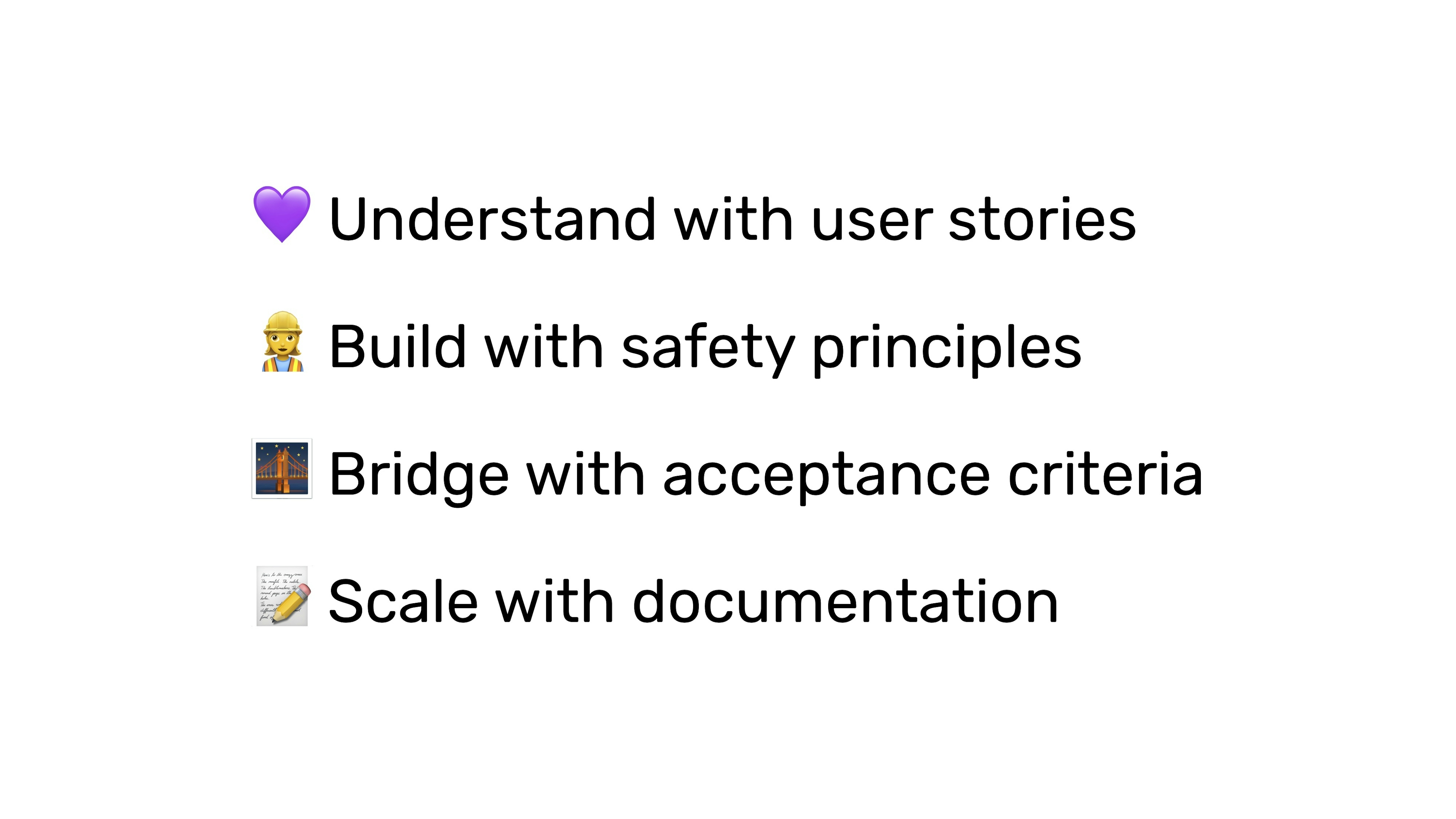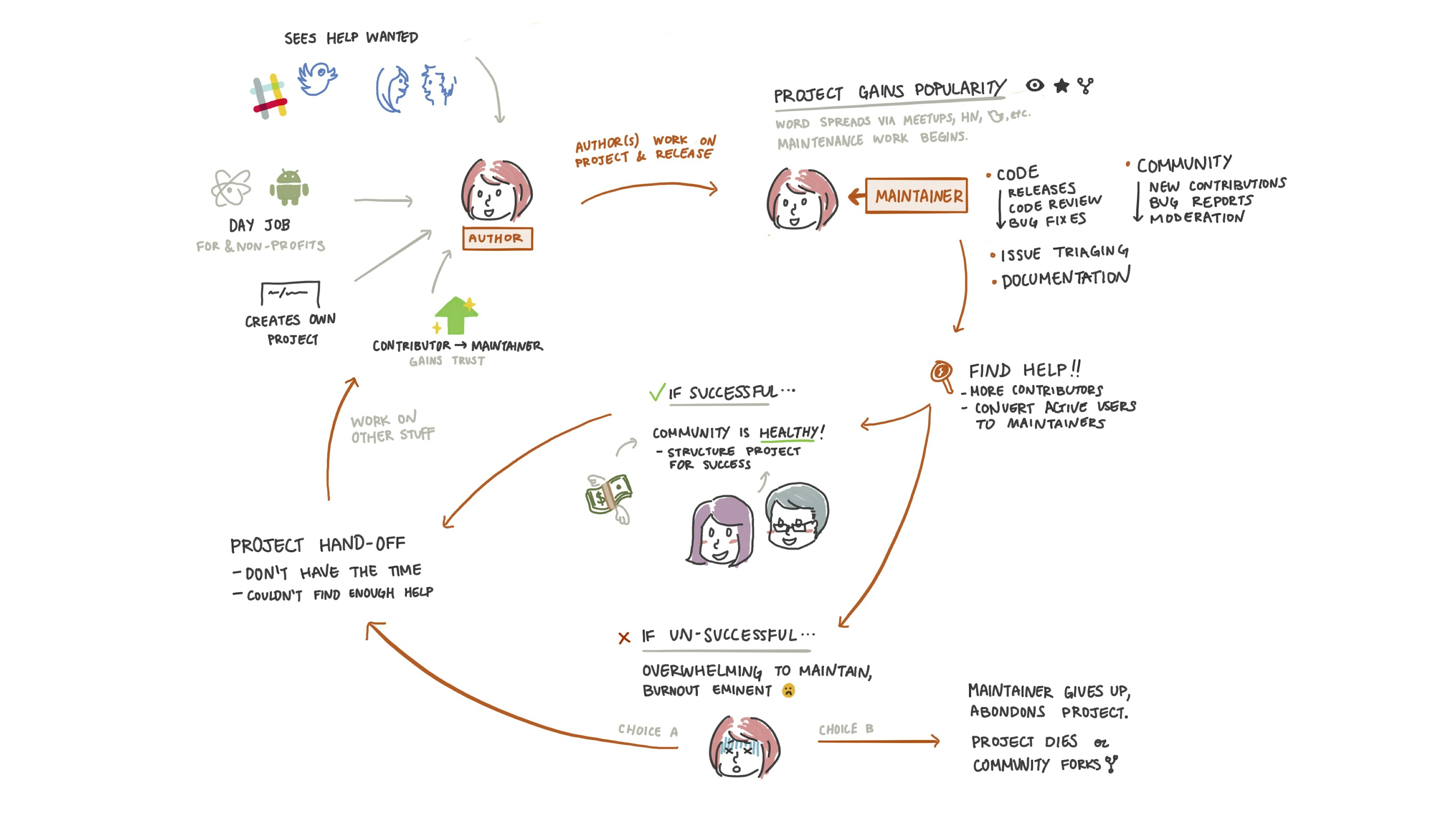Design strategies for building safer platforms
QCon SF 2018
41 min — Video, slides, and transcript available
Slide snippets

But regardless if you have a community safety or a trust and safety team at your company, I think building user safety into the foundation of technology is everyone's responsibility. Whether you're a manager, an individual contributor, a designer, researcher, engineer, it is everyone's responsibility. And I say that because really any platform or feature can and will absolutely be abused. Even if you're not primarily building a social network, you'd be surprised how things can be abused.
I mentioned before that you don't need to be a designer to incorporate design strategies or design thinking into your processes. There are ways to get your team collaborating on safer features that ask for consent and are thinking of how to make your communities, particularly to your users, safer:


As I mentioned, they're really great for aligning your features vision, but also sharing specialized knowledge with other teams that might not have this context before. And it also helps validate really quick decisions. If you're working on other features that may touch on abusive relationships, you can always refer back to that user story and validate, are we moving in the right direction? Sorry, I'm flexing my design skills right here. But this is another example that you could use on an iPad to really go through an entire journey. So I made this one for open source maintainers.
And what I actually really love about doing these is that it highlights the gaps in your product, where you are lacking. As you see in the bottom, if unsuccessful, if an open source project becomes unsuccessful and a lot of that is due to burnout. It really told us that, “Hey, maybe for this OKR we should focus on solving maintainer burnout.” So it's sort of like an Oracle map where you understand the parts that your project is lacking, your team is lacking, and how you can improve.